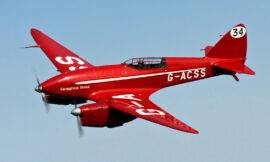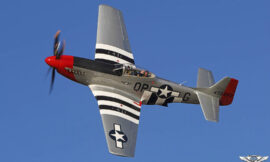The Hawker Hurricane Mk I is a legendary British single-seat fighter aircraft that played a crucial role during the early years of World War II, particularly in the Battle of Britain. Designed by Sydney Camm and produced by Hawker Aircraft Ltd., the Hurricane Mk I was instrumental in securing air superiority for the Allies and is celebrated for its robust design, impressive performance, and versatility.
Development and Design
The development of the Hurricane began in the early 1930s as part of the Royal Air Force’s (RAF) modernization efforts. The design aimed to replace the biplane fighters then in service with a more modern, monoplane configuration. Sydney Camm, the chief designer at Hawker Aircraft, took inspiration from previous successful designs, such as the Hawker Fury, to create a new aircraft that would meet the RAF’s demanding specifications.
The prototype of the Hurricane, designated K5083, first flew on November 6, 1935. It featured a fabric-covered metal frame, a significant departure from the all-metal designs that were becoming more common. This construction method provided a combination of strength and lightweight, contributing to the Hurricane’s agility and durability. The Hurricane Mk I was powered by the Rolls-Royce Merlin engine, initially the Merlin II and later the Merlin III, providing around 1,030 horsepower. This engine allowed the Hurricane to achieve a top speed of approximately 316 mph (509 km/h) and a service ceiling of 36,000 feet (10,973 meters).
Armament and Capabilities
One of the most notable aspects of the Hurricane Mk I was its armament. It was equipped with eight 0.303-inch (7.7 mm) Browning machine guns, mounted in the wings. This configuration provided a formidable volume of fire, which proved highly effective against enemy aircraft. The Hurricane’s armament and stable gun platform made it particularly deadly in dogfights and strafing runs.
The Hurricane Mk I was also designed with robustness and ease of maintenance in mind. Its wide-track landing gear allowed for more stable landings and takeoffs, particularly on rough airstrips. The aircraft’s construction made it relatively easy to repair battle damage, which was a significant advantage during the intense aerial combat of the Battle of Britain.
Operational History
The Hurricane Mk I entered service with the RAF in December 1937, with No. 111 Squadron being the first to receive the new fighter. By the time World War II broke out in September 1939, the Hurricane was already a significant component of the RAF’s Fighter Command. It quickly saw action in the early phases of the war, including the defense of France and the Dunkirk evacuation.
The Hurricane’s most famous and critical role came during the Battle of Britain, which took place from July to October 1940. During this period, the RAF’s Fighter Command, composed of Hurricanes and Supermarine Spitfires, defended the UK against the Luftwaffe’s relentless aerial assault. While the Spitfire is often remembered for its role, the Hurricane actually accounted for more enemy kills during the battle. It was responsible for approximately 60% of the RAF’s air victories, thanks to its effective armament and rugged construction.
Legacy and Variants
The success of the Hurricane Mk I led to the development of several variants, including the Mk II, which featured a more powerful Merlin XX engine and various armament configurations, such as cannons and rockets. These variants extended the Hurricane’s operational life and versatility, allowing it to serve in various theaters of the war, including North Africa, the Mediterranean, and the Far East.
The Hurricane’s legacy is marked by its pivotal role in securing air superiority for the Allies during a critical phase of World War II. Its contributions to the Battle of Britain cannot be overstated, as it helped prevent a German invasion of the UK and boosted Allied morale. The Hurricane’s ruggedness, ease of repair, and effectiveness in combat made it a favorite among pilots and ground crews alike.
Conclusion
The Hawker Hurricane Mk I stands as a symbol of British resilience and engineering prowess during World War II. Its design, capabilities, and the significant impact it had on the outcome of the Battle of Britain make it one of the most important aircraft in aviation history. The Hurricane’s contributions to the war effort, coupled with its robust and reliable design, ensure that it will always be remembered as a key player in the fight for freedom and the defense of Britain.



